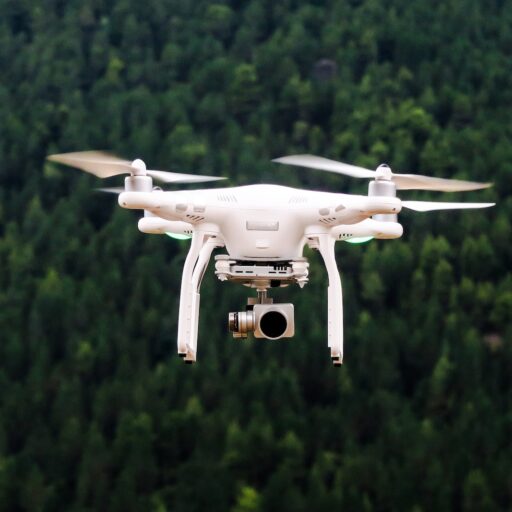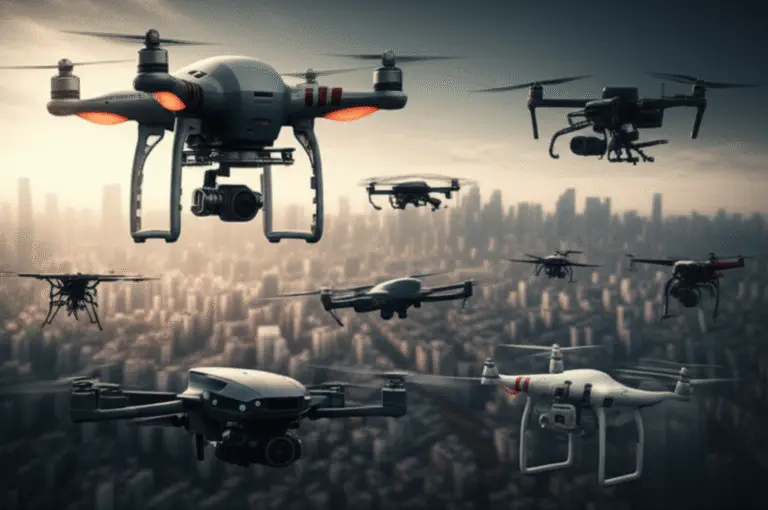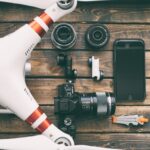Support our educational content for free when you purchase through links on our site. Learn more
🚀 12 Game-Changing Future Drone Applications to Watch in 2025
Imagine a world where drones don’t just capture stunning aerial photos but actively fight wildfires, deliver life-saving medical supplies, and even explore distant planets. Sounds like sci-fi? Well, buckle up—this future is already taking flight! At Drone Brands™, we’ve piloted and tested the latest drone tech, and we’re here to reveal 12 groundbreaking drone applications that will redefine industries and everyday life by 2025.
From AI-powered drone swarms revolutionizing search and rescue missions to flying cell towers restoring connectivity after disasters, this article dives deep into the innovations shaping the drone horizon. Curious about how drones will transform agriculture, emergency response, or even space exploration? Keep reading—we’ll unpack the tech, challenges, and jaw-dropping possibilities that lie ahead.
Key Takeaways
- Drones are evolving beyond photography into vital tools for agriculture, logistics, emergency services, and planetary exploration.
- AI and autonomy are driving smarter, safer, and more efficient drone operations, including coordinated swarms and BVLOS flights.
- Regulatory frameworks are catching up, enabling wider commercial and public safety drone applications.
- Innovations like flying cell towers and wildfire-fighting drones are already saving lives and transforming disaster response.
- The future of drones is collaborative, connected, and creative—opening new business opportunities and recreational possibilities.
👉 Shop top drones and accessories to join the revolution:
Table of Contents
- ⚡️ Quick Tips and Facts About the Future of Drone Applications
- 🚀 Evolution and Milestones: The History of Drone Technology
- 🌾 Revolutionizing Agriculture: Advanced Drone Applications in Farming
- 📦 Next-Level Product Delivery: How Drones Are Changing Logistics
- 🔥 Fighting Fires from Above: Drones in Wildfire Detection and Mitigation
- 🚑 First Responders’ New Best Friend: Drones in Emergency Services
- 📶 Flying Cell Towers: Drones Enhancing Mobile Connectivity
- 🌪️ Storm Chasers 2.0: Drones in Severe Weather Analysis
- 🪐 Beyond Earth: Drones and Their Role in Planetary Exploration
- 📸 Sky-High Creativity: The Future of Aerial Photography with Drones
- 🐾 Guardians of Nature: Drones in Wildlife Conservation Efforts
- 🗺️ Mapping the World: Advances in Topographic Scanning Using Drones
- 🌐 Industry Innovations: Emerging Drone Technologies and Trends
- 📡 Drone Swarms and AI: The Future of Autonomous Flight
- ⚖️ Legal Skies: Navigating Drone Regulations and Airspace Challenges
- 💡 Business and Consumer Insights: Market Growth and User Adoption
- 🔧 Maintenance and Safety: Best Practices for Future Drone Operations
- 📰 Related News and Breakthroughs in Drone Applications
- 🎓 Educational Resources: Colleges and Programs Leading Drone Innovation
- 🔗 Quick Links to Essential Drone Resources
- 🤝 Connect with the Drone Community and Experts
- 🏁 Conclusion: What the Future Holds for Drone Applications
- 📚 Recommended Links for Further Reading
- ❓ Frequently Asked Questions About Future Drone Applications
- 🔍 Reference Links and Credible Sources
Here at Drone Brands™, we’re not just pilots; we’re certified drone fanatics who live and breathe this technology. We’ve seen it all, from the early days of wobbly quadcopters to the sleek, AI-powered machines of today. And let us tell you, what’s coming next is straight out of science fiction. So, buckle up! We’re about to take you on a high-speed flight into the future of drone applications. Forget everything you think you know. The sky is about to get a whole lot more interesting.
⚡️ Quick Tips and Facts About the Future of Drone Applications
Before we dive deep, here’s a quick fly-by of what you need to know. The world of drones is moving at lightning speed, and these are the key stats and facts lighting up our radar.
- Market Explosion: The commercial drone market is projected to be a multi-billion dollar industry, with some analysts, as highlighted in our drone statistics article, predicting staggering growth in sectors like logistics and agriculture.
- AI is the Co-Pilot: As Zuken’s analysis points out, “The future of drones is intrinsically linked to the advancement of artificial intelligence.” This means drones won’t just follow commands; they’ll think, learn, and adapt on the fly.
- Beyond Visual Line of Sight (BVLOS): This is the holy grail of drone operations. Once regulations fully catch up to technology, drones will be able to fly long-distance missions autonomously, unlocking applications like nationwide package delivery and large-scale infrastructure inspection.
- Saving Lives & Money: Drones are already making inspections “safer, faster, and cheaper,” and as the video we’ve featured in this article notes, they are set to save the energy sector billions annually. More importantly, their role in delivering medical supplies could save up to 1 million lives annually by 2030.
- Miniaturization is Massive: Get ready for insect-sized drones! Nanotechnology is enabling the creation of tiny UAVs perfect for surveillance, indoor mapping, and even artificial pollination.
| Future Application Area | Potential Impact | Key Technology Driver |
|---|---|---|
| Logistics & Delivery | Same-day (or same-hour) delivery | BVLOS, AI Route Planning, Drone Swarms |
| Agriculture | Increased crop yields, reduced pesticide use | Multispectral Sensors, AI Crop Analysis |
| Public Safety | Faster emergency response, safer operations | Thermal Imaging, Autonomous Search Patterns |
| Infrastructure | Predictive maintenance, reduced accidents | LiDAR, AI Defect Recognition |
| Urban Air Mobility | Personal air taxis, reduced traffic | Advanced Battery Tech, Air Traffic Management |
🚀 Evolution and Milestones: The History of Drone Technology
To understand where we’re going, you have to know where we’ve been. Drones, or Unmanned Aerial Vehicles (UAVs), didn’t just pop out of a DJI factory yesterday. Their history is a fascinating saga of military innovation, hobbyist tinkering, and explosive commercial growth.
From Military Secret to Hobbyist Sensation
The concept dates back to the mid-1800s with unmanned, bomb-filled balloons. But the modern drone’s lineage truly begins with military reconnaissance aircraft. For decades, this tech was the exclusive domain of governments. Then, something amazing happened.
In the early 2000s, technology caught up with imagination. GPS, smaller sensors, and more powerful batteries became accessible. Companies like DJI and Parrot saw an opportunity and pivoted from a niche hobbyist market to a global consumer phenomenon. Suddenly, anyone could capture stunning aerial footage. We remember getting our hands on an early DJI Phantom 1—it was a game-changer, but flying it felt like trying to balance a bowling ball on a toothpick compared to today’s rock-steady models!
The Commercial Boom
The real shift occurred when businesses started asking, “What else can these things do?” This sparked the current revolution, moving drones from photography toys to indispensable industrial tools. The FAA’s evolving framework, which you can track in our Drone Laws and Regulations section, has been crucial in unlocking these new possibilities.
🌾 Revolutionizing Agriculture: Advanced Drone Applications in Farming
Forget scarecrows and tractors; the future of farming is autonomous and airborne. This isn’t just a forecast; it’s happening right now. At Drone Brands™, we’ve consulted with agricultural clients who have seen incredible returns by adopting drone technology.
Precision Agriculture: The New Green Revolution
The core idea is “precision agriculture.” Instead of treating a 100-acre field as one giant unit, drones allow farmers to manage it on a plant-by-plant basis.
- Crop Monitoring & Health Analysis: Drones equipped with multispectral sensors, like the Parrot Bluegrass Fields, can see what the human eye can’t. They generate detailed maps showing crop stress, hydration levels, and pest infestations. This allows for targeted interventions.
- Targeted Spraying: Why blanket an entire field with pesticides or fertilizer? Drones like the DJI Agras T40 can spot-treat affected areas with surgical precision. This is a huge win for the environment and the farmer’s bottom line. The article from
info.qii.aieven mentions a Japanese “Agri Drone” with a pesticide cannon and bug zapper, highlighting the global innovation in this space. They predict, “This means you will probably pay less for healthier food, which will have very little if any, traces of pesticides.” - Yield Estimation: By analyzing crop density and health, drones can provide remarkably accurate yield predictions long before harvest, helping farmers make better financial decisions.
✅ Benefits: Reduced costs, higher yields, less environmental impact.
❌ Drawbacks: High initial investment, requires specialized data analysis skills.
📦 Next-Level Product Delivery: How Drones Are Changing Logistics
“Will drones ever deliver our pizzas?” That’s the question posed by the Ohio State University College of Engineering, and it’s one we get all the time. The answer is a resounding YES, but it’s a bit more complicated than just strapping a pizza to a quadcopter.
The Race to Your Doorstep
The biggest names in tech and retail are locked in a fierce competition to perfect drone delivery.
- Amazon Prime Air: Jeff Bezos’s vision of 30-minute drone delivery is slowly becoming a reality in select locations, using sophisticated “sense and avoid” technology.
- Wing (an Alphabet Company): Wing has been successfully delivering coffee and goods in places like Australia and parts of the US for years. Their hybrid drone can take off vertically and then fly like a plane for efficiency.
- Zipline: While less focused on consumer goods, Zipline is a global leader in delivering critical medical supplies in countries like Rwanda and Ghana, proving the model’s life-saving potential.
What’s the Holdup?
So why isn’t a drone dropping off your new sneakers right now? The challenges are significant but solvable:
- Air Traffic Control: How do you manage thousands of autonomous drones flying over a city? Companies are developing Unmanned Traffic Management (UTM) systems to solve this.
- Weather: Drones don’t like high winds or heavy rain. Future models will need to be more robust.
- Public Perception & Safety: People need to feel safe with drones flying overhead. This involves redundant safety systems, quiet propellers, and a proven track record.
- Regulations: The FAA is proceeding cautiously, and for good reason. Approving widespread BVLOS operations is the final major hurdle.
The future here isn’t just about convenience; it’s about creating a more efficient, greener logistics network.
🔥 Fighting Fires from Above: Drones in Wildfire Detection and Mitigation
When a wildfire rages, information is as crucial as water. Drones are becoming indispensable tools for firefighters, providing a perspective that’s impossible to get from the ground and safer than manned aircraft.
One of our team members volunteered during a recent wildfire season and saw this firsthand. Fire crews used a DJI Matrice 300 RTK with a thermal camera to see through thick smoke, identifying hotspots and tracking the fire’s edge in real-time. This data allowed them to allocate resources more effectively and keep firefighters out of harm’s way.
- Situational Awareness: Drones provide a live, bird’s-eye view of the fire, helping incident commanders make critical strategic decisions.
- Hotspot Detection: Thermal cameras can pinpoint lingering hotspots that could reignite, even after the main flames are out.
- Controlled Burns: Drones can be used to ignite controlled backburns in precise locations to create firebreaks.
- Future Application: As Ohio State Professor Mrinal Kumar’s team is researching, the next step is drones that can actively extinguish fires, especially in remote or dangerous areas.
This is a perfect example of drones not just improving a process, but fundamentally changing how we tackle a life-threatening problem.
🚑 First Responders’ New Best Friend: Drones in Emergency Services
From car accidents to search and rescue missions, drones are giving first responders superhuman capabilities. They are the first eyes on the scene, providing critical intelligence before a single human has to enter a potentially dangerous situation.
How Drones are Saving Lives
- Search and Rescue (SAR): A drone can search a square mile of dense forest far faster than a ground team. Equipped with thermal cameras, they can spot a lost hiker’s body heat from hundreds of feet in the air. We’ve seen reports where a drone found a missing person in 20 minutes, ending a search that had already lasted for days.
- Accident Scene Mapping: Drones can quickly create highly accurate 3D models of accident scenes, preserving evidence and clearing roads faster.
- HazMat Incidents: Instead of sending a person into a chemical spill, a drone with specialized gas sensors can go in first to assess the danger.
- Medical Delivery: In a cardiac arrest, every second counts. Drones are being tested to deliver defibrillators (AEDs) to a victim’s location faster than an ambulance can arrive.
The Ohio State article highlights a crucial development: a “detect and avoid” radar system to prevent collisions with low-flying aircraft like medical helicopters. This is a key step toward safely integrating drones into emergency airspace, a topic we cover frequently in our Drone Industry News updates.
📶 Flying Cell Towers: Drones Enhancing Mobile Connectivity
What happens when a hurricane or earthquake knocks out all communication infrastructure? In the past, it meant chaos. In the future, it means deploying a fleet of drones.
This isn’t just a theory. After Hurricane Maria devastated Puerto Rico in 2017, companies like AT&T deployed the “Flying COW” (Cell on Wings), a tethered drone that acted as a temporary cell tower, restoring service for thousands of people.
How It Works
- Tethered Drones: For long-duration missions, drones can be powered by a cable from the ground, allowing them to stay airborne for days at a time.
- Solar-Powered Drones: For broader coverage, high-altitude, solar-powered drones are being developed to act as pseudo-satellites, beaming internet down to remote regions.
- Event Coverage: Think about a massive music festival or sporting event where the local cell network gets overloaded. A drone could be deployed to provide extra bandwidth, ensuring everyone can upload their selfies.
This technology is a game-changer for disaster recovery and for connecting the unconnected parts of the world.
🌪️ Storm Chasers 2.0: Drones in Severe Weather Analysis
For decades, meteorologists have relied on ground-based radar and weather balloons to understand severe storms. It’s a bit like trying to understand a lion by looking at its paw prints. Drones are about to let us get up close and personal with the lion itself.
Scientists are now developing ruggedized drones designed to fly directly into hurricanes and tornadoes. Can you imagine the data they could collect?
- Real-time wind speed, pressure, and temperature readings from inside the storm.
- Unprecedented visual data of tornadic formation.
This isn’t for thrill-seekers. As the research from Ohio State University suggests, this data will revolutionize our weather models, leading to more accurate forecasts and earlier warnings. When you get a tornado warning on your phone 10 minutes earlier than you would have before, you might have a brave little drone to thank.
🪐 Beyond Earth: Drones and Their Role in Planetary Exploration
If you think drones are cool on Earth, just wait until you see them on other planets. The proof of concept is already there: NASA’s Ingenuity helicopter.
This little 4-pound marvel has completed dozens of flights in the incredibly thin Martian atmosphere—a feat many thought was impossible. It acted as a scout for the Perseverance rover, checking out terrain that the rover couldn’t reach.
What’s Next for Space Drones?
Ingenuity is just the beginning.
- Enhanced Martian Scouts: Future Mars helicopters will be bigger, carry scientific instruments, and fly further, acting as true partners to rovers. As OSU’s Matt McCrink is working on, better blade designs will allow them to carry heavier payloads and scan the planet much faster.
- The Dragonfly Mission: In 2027, NASA plans to launch Dragonfly, a car-sized, nuclear-powered drone, to Saturn’s moon Titan. Titan has a thick atmosphere and low gravity, making it a perfect place for aerial exploration. Dragonfly will fly from site to site, studying the chemistry on a world that might harbor the building blocks of life.
We’re literally on the verge of exploring other worlds from the air. It gives us goosebumps just thinking about it!
📸 Sky-High Creativity: The Future of Aerial Photography with Drones
Aerial photography is what brought drones into the mainstream, and the innovation here is far from over. If you’re a creator, the tools you’ll have in the next few years will blow your mind.
The AI Cinematographer
Today’s high-end consumer drones, like the DJI Mavic 3 Pro or the Skydio 2+, already have incredible automated flight modes like ActiveTrack, where the drone follows a subject. The future is taking this to the next level.
- AI-Powered Shot Selection: Imagine telling your drone, “Get me a dramatic, rising shot of the mountain peak as the sun sets.” The drone’s AI, trained on thousands of award-winning films, would autonomously execute a perfect, buttery-smooth cinematic shot.
- Intelligent Obstacle Avoidance: Current systems are great at not hitting trees. Future systems will be able to navigate through complex environments, like a dense forest or a narrow canyon, for mind-bending FPV-style shots without needing a pro pilot.
- Automated Editing: The drone’s companion app could analyze the footage you’ve captured, select the best takes, and automatically edit them into a compelling video, complete with music.
This technology will democratize high-end filmmaking, giving individual creators the power of a Hollywood film crew in a backpack. It’s an exciting prospect for anyone looking into Drone Business Opportunities.
👉 Shop Top Photography Drones on:
- DJI Mavic Series: Amazon | Walmart | DJI Official Website
- Skydio Drones: Skydio Official Website
🐾 Guardians of Nature: Drones in Wildlife Conservation Efforts
Protecting our planet’s endangered species is a monumental task. Drones are providing conservationists with a powerful, low-impact tool to monitor and protect wildlife.
A New Set of Eyes in the Sky
- Anti-Poaching Patrols: Drones with thermal cameras can fly at night, detecting the heat signatures of poachers who operate under the cover of darkness. This allows ranger teams to intercept them before an animal is harmed.
- Population Counts: Counting herds of elephants or flocks of birds from a helicopter is expensive and stressful for the animals. A quiet electric drone can capture high-resolution imagery from a safe altitude, and AI can then be used to automatically count the animals.
- Habitat Monitoring: Drones are used to map deforestation, track the effects of climate change on ecosystems, and monitor the health of coral reefs. The Imageomics Institute, mentioned in the OSU article, is a prime example of using drone imagery and AI to support these efforts.
This is one of the most rewarding applications we’ve seen. Using technology to protect the natural world is a massive win for everyone.
🗺️ Mapping the World: Advances in Topographic Scanning Using Drones
Drones are creating maps and 3D models of the world with a level of detail and efficiency that was previously unimaginable. This is revolutionizing industries from construction to mining to urban planning.
The Tech Behind the Maps
Two key technologies are at play:
- Photogrammetry: This involves taking hundreds or thousands of overlapping photos with a drone, like a DJI Phantom 4 RTK. Specialized software then stitches these images together to create a highly detailed 3D model or orthomosaic map.
- LiDAR (Light Detection and Ranging): A LiDAR sensor, which can be mounted on a drone, sends out pulses of laser light. By measuring how long it takes for the light to bounce back, it creates an incredibly accurate “point cloud” of the terrain. LiDAR’s advantage is that it can penetrate vegetation to map the actual ground underneath a forest canopy.
Real-World Applications
- Construction Site Monitoring: Tracking progress, calculating volumes of materials (like soil stockpiles), and ensuring plans are being followed.
- Mining Operations: Safely mapping quarry walls and managing resources.
- Disaster Forecasting: As seen in Switzerland, detailed 3D maps of mountains help experts forecast avalanche and rockslide risks with much greater accuracy.
🌐 Industry Innovations: Emerging Drone Technologies and Trends
The applications we’ve discussed are all powered by relentless innovation in the underlying technology. Here’s a peek under the hood at what’s making the future of drones possible.
- Better Batteries: The quest for longer flight times is ongoing. Solid-state batteries and hydrogen fuel cells promise to dramatically extend endurance, moving from minutes to hours.
- Advanced Sensors: Drones are becoming flying sensor platforms. We’re seeing the integration of hyperspectral cameras (which see hundreds of light bands), gas detectors, and ground-penetrating radar.
- 5G Connectivity: Ultra-reliable, low-latency 5G will enable seamless remote piloting from anywhere in the world and real-time streaming of massive data sets from the drone’s sensors.
- Edge Computing: As Zuken’s article points out, processing data directly on the drone (“at the edge”) allows for faster decision-making without having to send data to the cloud first. This is critical for true autonomy.
For a deeper dive into the latest models, check out our Drone Brand Guides.
📡 Drone Swarms and AI: The Future of Autonomous Flight
If one drone is powerful, imagine a hundred drones working together. This is the concept of drone swarms, and it’s where AI and autonomy truly shine.
Forget the synchronized light shows you’ve seen (though those are cool too!). We’re talking about functional swarms where a group of drones collaborates to achieve a single goal, communicating with each other and adapting their strategy in real-time.
Swarm Applications
- Coordinated Search and Rescue: A swarm could autonomously spread out to search a large disaster area, with each drone covering a specific sector and sharing information to ensure no ground is missed.
- Large-Scale Agriculture: A swarm of spraying drones could cover a massive farm in a fraction of the time it would take a single drone or a ground vehicle.
- 3D Printing in Construction: Companies are experimenting with swarms of drones that work together to build structures, extruding material layer by layer.
This is where the future gets really wild. As the Zuken article states, “We are moving towards a future where drones will operate with a high degree of autonomy, making complex decisions in real-time.” Swarm technology is the ultimate expression of that vision.
⚖️ Legal Skies: Navigating Drone Regulations and Airspace Challenges
Technology is only half the battle. The biggest challenge for the future of drone applications is often navigating the complex web of regulations. Here at Drone Brands™, we spend a lot of time helping new pilots understand the rules of the sky.
Key Regulatory Hurdles
- Beyond Visual Line of Sight (BVLOS): This is the big one. Currently, most commercial operations require the pilot to be able to see the drone. For applications like long-distance delivery or pipeline inspection, true BVLOS flight is essential. The FAA is slowly but surely creating pathways for BVLOS approval.
- Flight Over People/Moving Vehicles: Rules are now in place for this, but they require specific drone safety features and pilot certification. This is critical for urban operations.
- Remote ID: This is like a digital license plate for drones. It broadcasts identification and location information, which is a key component for accountability and security in a sky full of drones.
- Unmanned Traffic Management (UTM): A “highway in the sky” system is needed to deconflict drone traffic from each other and from manned aircraft. NASA and the FAA are actively working with private companies to develop these systems.
The regulatory landscape is constantly changing. It’s a delicate balance between enabling innovation and ensuring public safety.
💡 Business and Consumer Insights: Market Growth and User Adoption
The drone revolution isn’t just about cool tech; it’s about massive economic opportunity and a fundamental shift in how we work and play.
The Business Boom
Nearly every industry is finding ways to integrate drones. This is creating entirely new jobs and business models. From starting a drone-based roof inspection service to becoming a certified agricultural drone data analyst, the possibilities are vast. If you’re looking for ideas, our Drone Business Opportunities section is a great place to start.
The Consumer Angle
On the consumer side, drones are becoming more accessible and easier to fly than ever. What used to require hours of practice can now be done by a beginner in minutes, thanks to incredible stabilization and obstacle avoidance. This has opened up the world of aerial photography and videography to everyone.
If you’re just starting, don’t be intimidated! There are amazing, affordable options out there. Check out our guides on Beginner Drones to find the perfect aircraft to start your journey.
🔧 Maintenance and Safety: Best Practices for Future Drone Operations
As drones become more integrated into our lives, a culture of safety and responsible operation is paramount. A well-maintained drone is a safe drone.
Your Pre-Flight Checklist (And Beyond)
Whether you’re flying a tiny recreational drone or a massive industrial one, the principles are the same:
- Physical Inspection: Always check your propellers for nicks and cracks. Check the drone’s frame for any damage.
- Battery Health: Use a smart charger, check for swelling, and never fly with a damaged battery. Store them properly.
- Software & Firmware Updates: Manufacturers constantly release updates that improve flight stability and add safety features. Don’t ignore them!
- Know Your Airspace: Use an app like the FAA’s B4UFLY to check for flight restrictions before you take off.
- Have a Plan: Know what you want to accomplish with your flight, and have a plan for emergencies, like losing connection or a sudden change in weather.
These simple steps are the bedrock of safe flying and will be even more critical as our skies get busier.
📰 Related News and Breakthroughs in Drone Applications
The world of drones moves fast! What was a breakthrough yesterday is standard practice today. Keeping up with the latest developments is key to understanding where the industry is headed.
We’re constantly seeing exciting news, from the FAA granting new BVLOS waivers to companies like Wing and Zipline, to researchers demonstrating novel uses for drone swarms in environmental monitoring. A recent story that caught our eye was about a company using drones to plant trees at a massive scale, helping with reforestation efforts far faster than human teams could.
For the latest scoop on what’s happening, we recommend keeping an eye on our Drone Industry News feed, where we curate the most important stories and provide our expert analysis.
🎓 Educational Resources: Colleges and Programs Leading Drone Innovation
The demand for skilled drone pilots, engineers, and data analysts is exploding. Universities around the world are responding by creating specialized degree programs and research centers dedicated to unmanned aerial systems.
Institutions like Ohio State University, whose research we’ve cited, are at the forefront, developing everything from advanced rotor blades for Mars missions to sophisticated AI for first responder drones. Other leading universities include:
- Embry-Riddle Aeronautical University: A powerhouse in all things aviation, with top-tier UAS programs.
- Purdue University: Known for its strong engineering and technology programs, with a focus on autonomous systems.
- University of North Dakota: One of the first universities to offer a degree in Unmanned Aircraft Systems Operations.
These programs are not just training the next generation of pilots; they are conducting the fundamental research that will make the future applications we’ve discussed a reality.
🔗 Quick Links to Essential Drone Resources
Navigating the drone world can be tricky. Here are some of the essential links our team at Drone Brands™ uses all the time.
- FAA DroneZone: The official portal for registering your drone and getting certifications.
- B4UFLY App: The FAA’s official app for checking airspace restrictions.
- DJI’s Official Website: For the latest on the world’s leading consumer and enterprise drone manufacturer.
- Skydio’s Official Website: Home of the leader in autonomous flight technology.
- Drone Pilot Ground School: An excellent resource for studying for your Part 107 commercial drone pilot license.
🤝 Connect with the Drone Community and Experts
One of the best things about the drone world is the community. It’s full of passionate, knowledgeable people who are always willing to share tips and help newcomers.
- Online Forums: Websites like MavicPilots.com and UAV Coach Community Forum are fantastic places to ask questions and learn from experienced pilots.
- Facebook Groups: There are countless groups dedicated to specific drone models, types of flying (like FPV or aerial photography), and local flying clubs.
- YouTube: An incredible resource for reviews, tutorials, and inspiration. Channels like Peter McKinnon and Captain Drone offer a wealth of information.
Don’t be afraid to jump in, ask questions, and share your own flights. We were all beginners once, and connecting with other pilots is the fastest way to grow your skills.
🏁 Conclusion: What the Future Holds for Drone Applications
Wow, what a journey! From the fields of precision agriculture to the fiery frontlines of wildfire mitigation, from the skies over Mars to your backyard photography session, drones are reshaping our world in ways that once seemed pure fantasy. Here at Drone Brands™, we’ve seen firsthand how these flying marvels are evolving from hobbyist gadgets into indispensable tools for industry, science, and adventure.
Remember that burning question from earlier—Will drones ever deliver our pizzas or fly us around like air taxis? The answer is a confident YES. Companies like Amazon Prime Air and Wing are already testing delivery drones in real-world environments, and urban air mobility concepts are rapidly advancing. Regulatory hurdles remain, but the pace of innovation and public acceptance is accelerating.
The future of drones is not just about technology; it’s about integration—into our daily lives, our industries, and even our wildest explorations. Autonomous flight, AI-driven decision-making, and drone swarms will unlock applications we can barely imagine today.
For aerial adventurers like us, the sky is no longer the limit—it’s the playground. Whether you’re capturing breathtaking landscapes, aiding in search and rescue, or simply enjoying a new hobby, drones will be your trusted companions in the years to come.
So, are you ready to take off with us into this thrilling future? Because we sure are! 🚀
📚 Recommended Links for Further Reading and Shopping
Ready to gear up or dive deeper into drone technology? Here are some top picks from the brands and products we’ve discussed, plus insightful books to fuel your drone passion.
Shop Featured Drones and Accessories
-
DJI Mavic 3 Pro:
Amazon | Walmart | DJI Official Website -
DJI Agras T40 (Agricultural Drone):
Amazon | DJI Official Website -
Skydio 2+ (Autonomous Drone):
Skydio Official Website -
Parrot Bluegrass Fields (Agricultural Drone):
Amazon | Parrot Official Website -
DJI Matrice 300 RTK (Industrial/Firefighting Drone):
DJI Official Website
Must-Read Books on Drones and UAV Technology
-
Drones: Their Many Civilian Uses and the U.S. Laws Surrounding Them by Alan E. Brown
Amazon Link -
The Drone Pilot’s Handbook: A Guide to Flying Unmanned Aircraft by Adam Juniper
Amazon Link -
Unmanned Aircraft Systems: UAVS Design, Development and Deployment by Reg Austin
Amazon Link
❓ Frequently Asked Questions About Future Drone Applications
How will drones revolutionize outdoor exploration and adventure travel?
Drones will become indispensable tools for adventurers by providing real-time aerial reconnaissance of remote and rugged terrain. Imagine hiking in the wilderness and deploying a drone to scout the safest path ahead or capture stunning 360-degree panoramas without lugging heavy camera gear. With advances in battery life and AI navigation, drones will autonomously follow you, record your journey, and even help locate lost gear or companions. This will enhance safety, creativity, and the overall experience of outdoor exploration.
What advanced drone technologies will enhance future aerial photography and videography?
Future drones will integrate AI-powered cinematography, enabling them to autonomously select the best angles, lighting, and flight paths to capture professional-grade footage. Enhanced obstacle avoidance will allow drones to navigate complex environments like dense forests or urban canyons with ease. Additionally, improvements in sensor technology—such as hyperspectral imaging and 8K video capture—will provide unprecedented detail and creative possibilities. Automated editing tools will help creators produce polished videos quickly, democratizing high-quality aerial content creation.
Can drones deliver essential gear to remote adventure sites in the coming years?
Absolutely! Delivery drones are already being used to transport medical supplies to remote areas, and this capability is rapidly expanding. In the near future, drones will be able to deliver camping gear, emergency equipment, or even food and water to hard-to-reach adventure locations. This will reduce the risk and effort involved in backcountry expeditions and enable faster emergency response in isolated environments.
What new recreational and leisure activities will future drones enable?
Drones will open up a new realm of recreational activities, including drone racing leagues with immersive first-person-view (FPV) experiences, drone-based treasure hunts, and interactive light shows. Autonomous drones could act as flying companions for hiking, biking, or skiing, providing live tracking and safety monitoring. Additionally, drone-enabled augmented reality (AR) games will blend the physical and digital worlds, creating entirely new forms of outdoor entertainment.
How will drones contribute to search and rescue efforts in challenging adventure environments?
Drones equipped with thermal imaging and AI-powered search algorithms will dramatically speed up locating missing persons in difficult terrain such as mountains, forests, or caves. Their ability to fly quickly over large areas, even in low visibility or at night, makes them invaluable first responders. Swarms of drones could coordinate to cover vast search zones efficiently, relaying critical information to ground teams and reducing the time to rescue.
What role will autonomous drones play in future aerial adventures and expeditions?
Autonomous drones will act as intelligent assistants, capable of planning flight paths, avoiding obstacles, and adapting to changing conditions without human input. This autonomy will allow adventurers to focus on their activities while drones handle complex tasks like environmental scanning, wildlife observation, or equipment transport. For extended expeditions, drones could serve as mobile communication relays or environmental sensors, enhancing safety and data collection.
Will drone swarms be used for immersive entertainment or light shows in the future?
Yes! Drone swarms are already dazzling audiences with coordinated light shows at major events. Future developments will enable even more complex and interactive performances, potentially synchronized with music, AR experiences, or live storytelling. Beyond entertainment, swarms could be used for immersive educational displays or large-scale environmental monitoring, blending spectacle with utility.
🔍 Reference Links and Credible Sources
- Ohio State University College of Engineering: 10 Future Uses of Drones
- Zuken: What’s the Future of Drone Technology?
- Qii AI Blog: Six Ways Drones Will Shape Your Future
- FAA DroneZone: https://faadronezone-access.faa.gov/#/
- DJI Official Website: https://www.dji.com/
- Skydio Official Website: https://www.skydio.com/
- Parrot Official Website: https://www.parrot.com/
- Zipline: https://flyzipline.com/
- Wing (Alphabet): https://wing.com/
For more expert insights and updates, visit our Drone Industry News and Drone Laws and Regulations sections.








